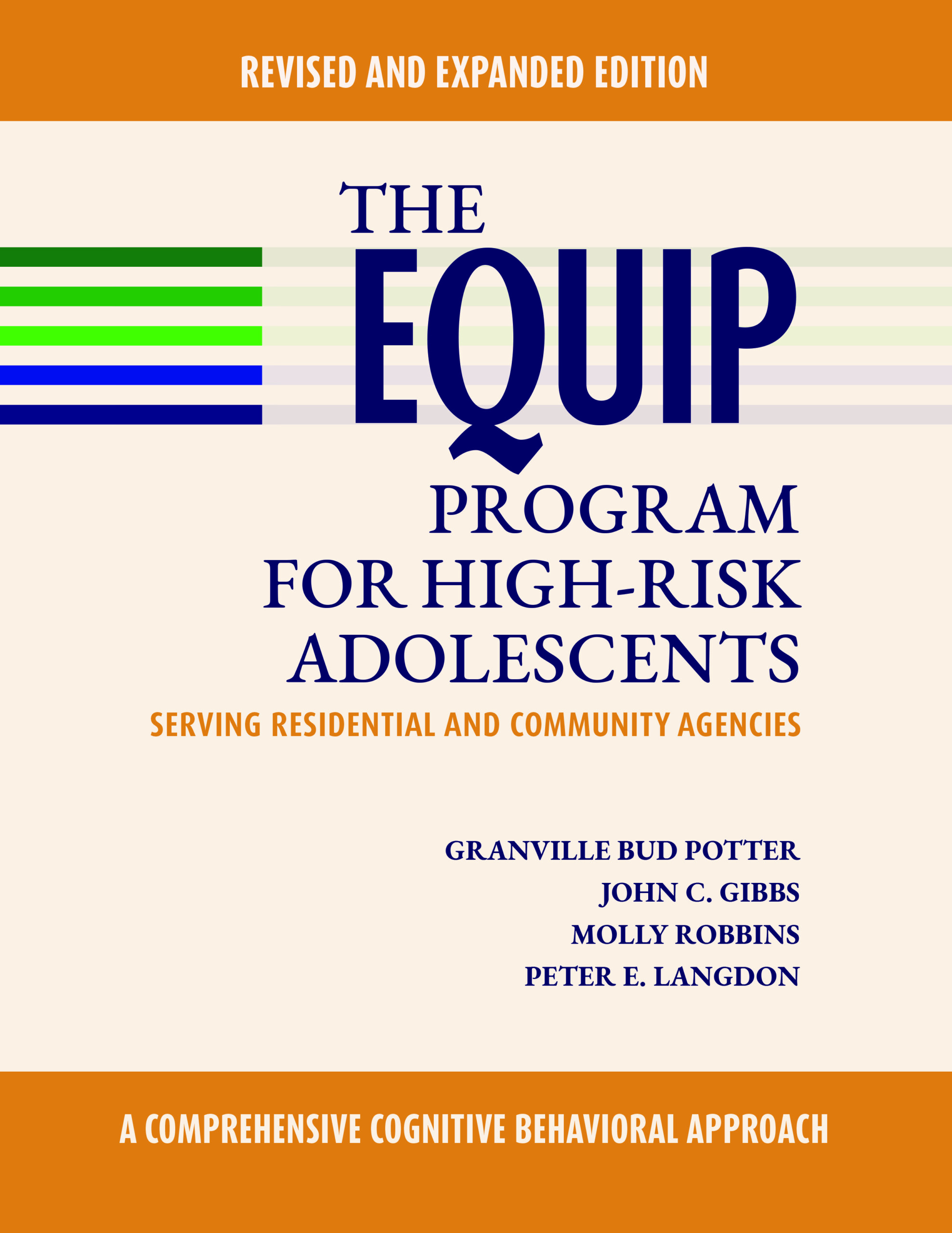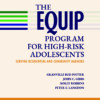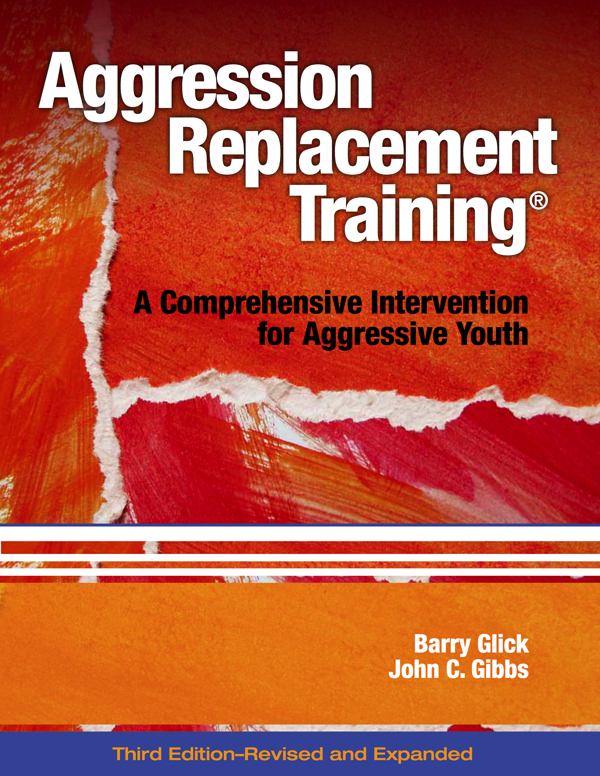The Revised and Expanded EQUIP Program and the EQUIP Implementation Guide Now Combined into One Book!
Scroll down to listen to the Prosocially Yours Podcast in this fascinating discussion including all the authors.
This newly revised and expanded edition of the EQUIP program features a comprehensive cognitive behavioral approach for helping aggressive, high-risk youth.
The EQUIP program, with its motivating–equipping rationale, has a historical background spanning decades. This newly expanded and revised edition of the EQUIP program—The EQUIP Program for High-Risk Adolescents: Serving Residential and Community Agencies—features a comprehensive cognitive behavioral approach for helping aggressive, high-risk youth. EQUIP starts, in residential and even community agencies, by turning around negative peer influences—the high-risk youth’s negative (e.g., irresponsible, destructive) immediate culture.
EQUIP is a comprehensive program: It utilizes both motivating (peer-helping) and equipping (cognitive behavioral) approaches. This book now contains the complete EQUIP Implementation Guide.
Key Features:
The basic idea and core program of EQUIP—motivating and equipping aggressive youths to think and act responsibly—has not changed. Yet, some important innovations have emerged and are included in this new edition. We note four main expansions, responsive to trends since 1995:
- community agencies: You will see greater attention to the implementation of EQUIP in nonresidential community or outpatient agencies.
- life issues: We have expanded our self-report tools and treatment focus to include youths’ current life issues, such as gun violence and domestic violence.
- self-debasing cognitive distortions: This expansion addresses the increasing hopelessness and self-debasing thinking among today’s youthful offenders—both male and female.
- social media: Youths’ increase in the use of online social media warrants inclusion of Managing Social Media among the new current life issues in this new edition
Since its introduction in the early 1990s, the EQUIP Program has been adapted and implemented at various facilities and institutions in North America, Europe, and Australia. The institutions include juvenile correctional facilities, community-based adult correctional facilities, halfway houses, re-entry programs, and middle grades through high schools. Individuals served have ranged in age from preadolescence through adulthood.
Shown below is episode 24 of Prosocially Yours, a podcast produced by Research Press. In this episode, host Elizabeth Hess discusses the development of The EQUIP Program for High-Risk Adolescents with authors Potter, Gibbs, Robbins, and Langdon. The discussion is wide-ranging and focuses on the key elements in this newly revised and expanded edition.
“I am delighted to witness the release of this updated and expanded edition of the ground-breaking EQUIP program. EQUIP has become a flagship treatment program over the last three decades due to its unique integration of a motivating positive peer culture with cognitive behavioral remediation of delays and deficits. The well-documented efficacy of EQUIP with high-risk youth reflects its strong theoretical foundations as well as its practicality and ease of implementation. In this new edition, EQUIP has become modernized and even more user friendly – the updated directives and supporting downloadable handouts make fidelity readily achievable. These new enhancements guarantee that EQUIP will continue to improve the lives of high-risk youth and everyone that cares for and about them.”
Alvaro Q. Barriga, Ph.D.
Licensed Psychologist and Co-Author of the How I Think (HIT) Questionnaire and Manual
“Building on earlier research, The EQUIP Program embraces the seldom-recognized positive potential of high-risk teens to develop empathy and concern, thereby countering the pernicious problem of negative peer influence. This new edition includes many practical examples of how to implement and support this process and provides myriad strategies to equip group members as effective helpers. The challenge is to ensure fidelity by keeping staff and group members focused on four core strengths: building a climate of belonging, enhancing problem-solving skills, developing responsibility, and creating a culture of caring.”
—Larry K. Brendtro, PhD
Founder of Reclaiming Youth at Risk, and author of Positive Peer Culture: Building Strengths in Youth.
“This revised and expanded edition of the groundbreaking EQUIP Program is a “must read” for counselors, social workers, and mental health professionals working with high risk adolescents. EQUIP draws on the best of cognitive behavioral therapy, moral development research, and positive peer culture approaches to provide a comprehensive, science-based, user-friendly curriculum that can readily be applied in a wide range of residential and community settings.”
—Dr. Clark Power, PhD
Professor of Psychology and education in the Program of Liberal Studies (PLS), and a Concurrent Professor in the Department of Psychology, University of Notre Dame
“The EQUIP program is a great method. As a psychologist and teacher, I have really loved to work with youth using this method. It is for me THE method to use, especially with criminal and anti-social youth, to change their behaviour and way of thinking. The program is also a very great prevention method for schools and their teachers and youngsters/students. I have participated in incredibly good EQUIP meetings and I SAW young people changing their thoughts and ways of behaving. In this new version, the EQUIP method is even more excellent through some well-thought-out additions and expansions. I advise every youth and school agency to implement this excellent EQUIP method and use the EQUIP program for decades and decades to come.”
—Drs. Jan M. van Westerlaak, psychologist and certified teacher, The Netherlands








